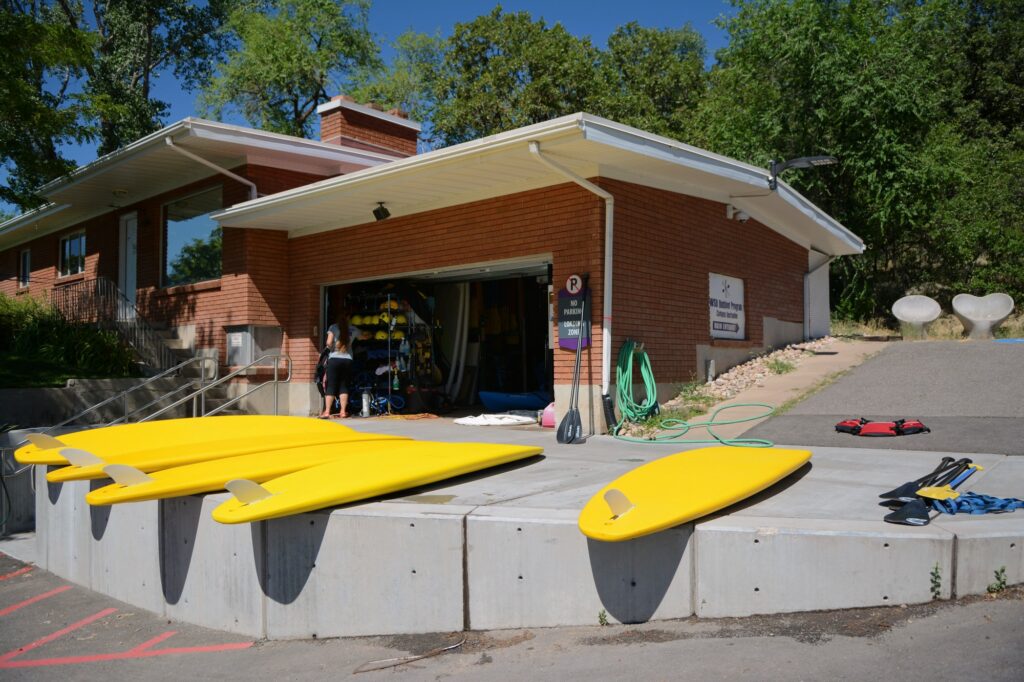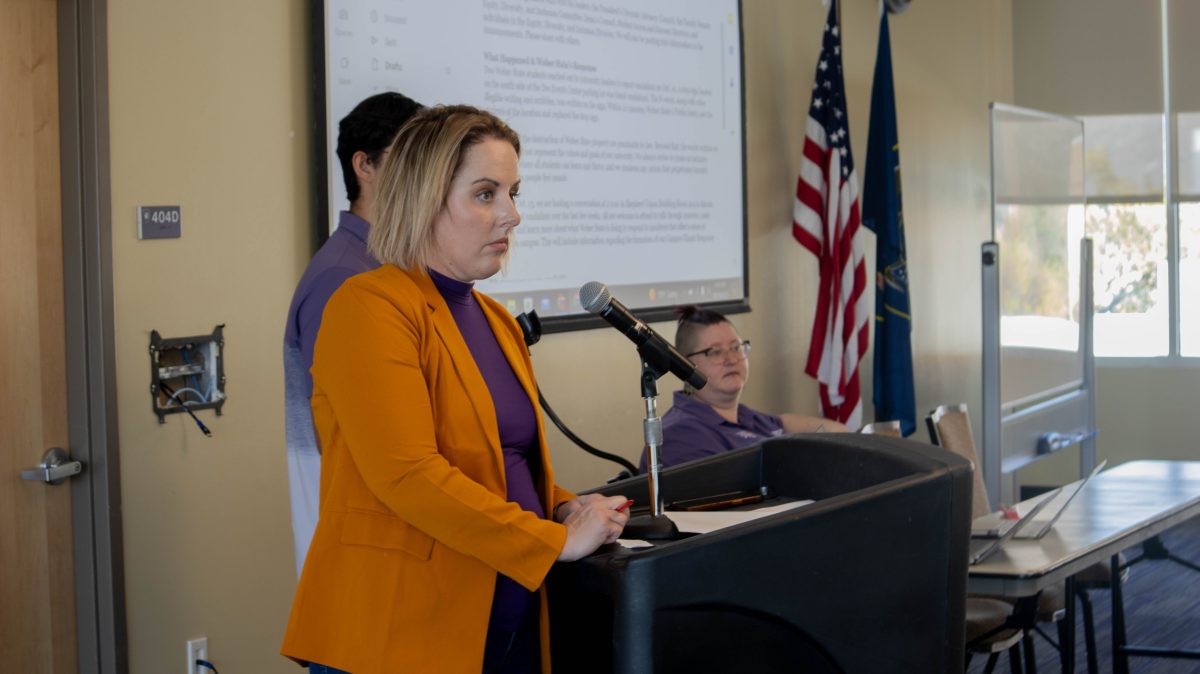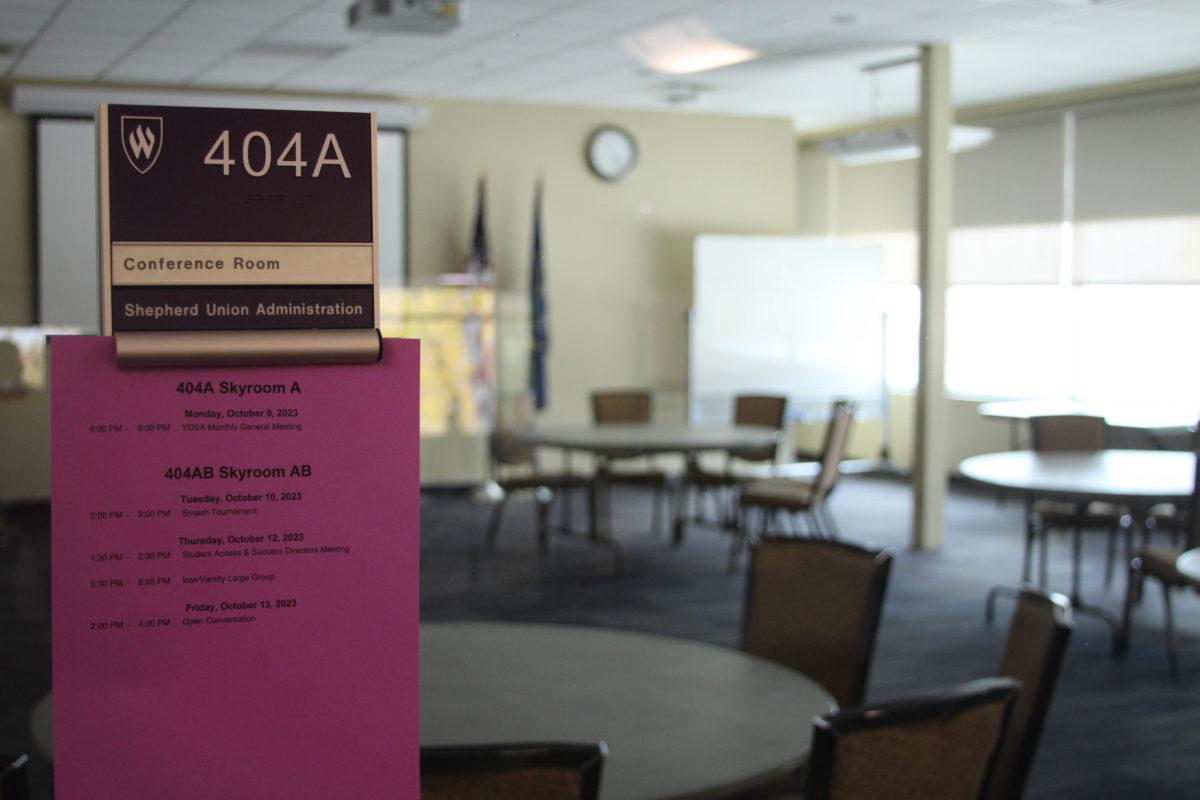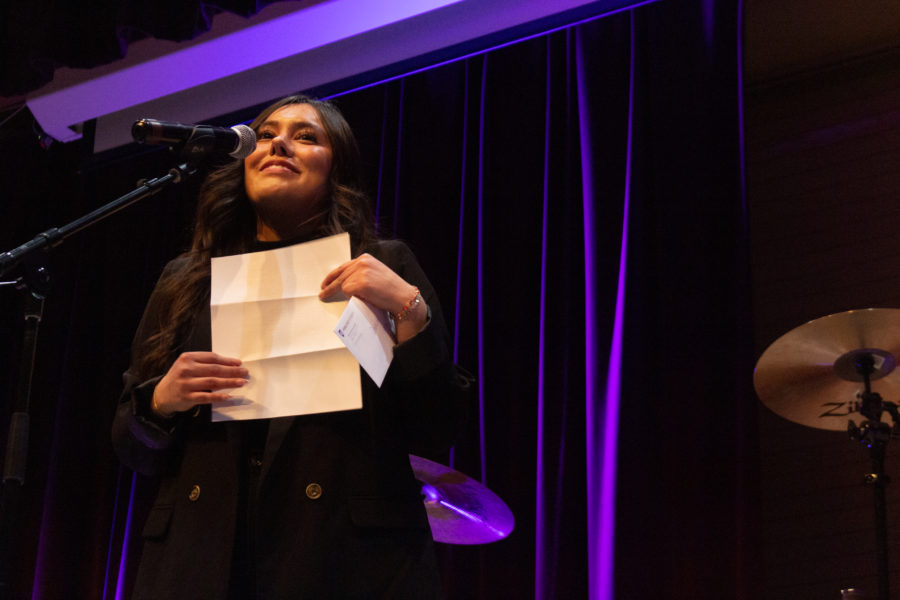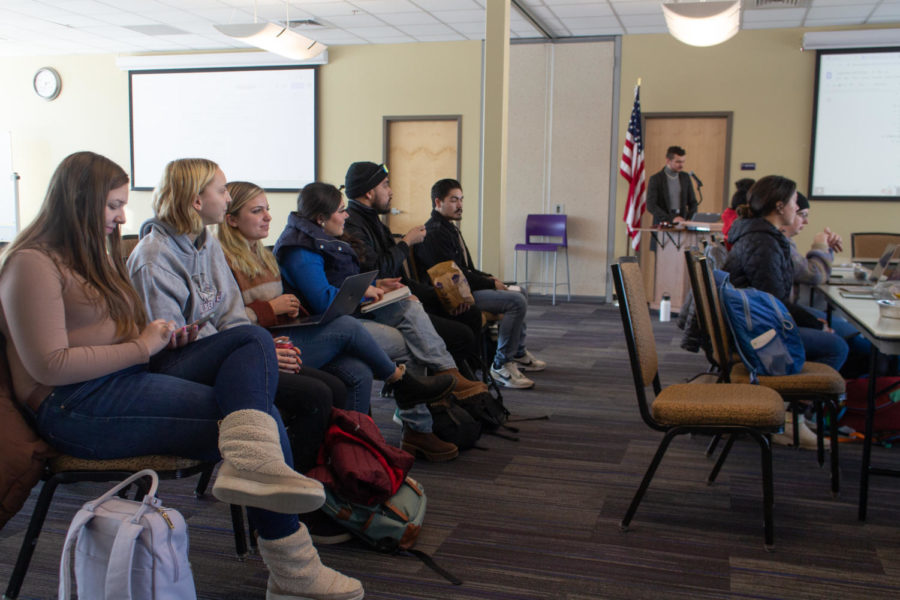University faculty members presented the development of two new Ogden campus buildings to the Weber State University Student Association Senatorial meeting on Feb. 12.
Assistant Director of WSU’s Campus Recreation and Outdoor Program Coordinator Daniel Turner and Director of Intercollegiate Athletics Jerry Bovee talked to the senate about the proposition and the utilization of student fee revenue for funding the respective projects.
This request was approved by the student senate unanimously. The student senate is consulted when construction projects use student fees.
Although input from the student senate cannot directly affect how much of the funding, if any, those requests may receive, their consideration is heavily weighted and valued by the Student Fee Recommendation Committee, who ultimately decide how much funding is granted toward any requests.
Despite being two separate projects, the SFRC treated it as a single request with a possible total of $6 million to $8 million. As a result of the request being higher than $150,000, the student senate was required to consider the request.
The last time the student senate entertained a request of this magnitude was for the funding and development of the Dee Events Center, which then cost $11.3 million and was finished on Nov. 29, 1977.
Similarly, that request also required input by the student senate and was approved.
Despite such a high price tag for these combined projects, students can expect no increase to student fees as a result of this approval and subsequent construction. These departments would withdraw money approved by the SFRC, then pay it back over a five-year period, incurring no additional costs to students.
One of the projects presented at the student senate meeting was for the construction of a new building for the Outdoor Recreation Department. Although not finalized, current plans include placing this new facility just north of Wildcat Village, where the WSU Veterans Affairs and the surrounding parking spaces are currently located.
Turner said they currently have reached maximum capacity with the current building and are unable to add any more equipment for rent as well as other instructional programs. “In this building, we have about 5000 different individual pieces of equipment that we rent to our students and general public,” Turner said.
The problem also comes from the lack of space and the foot traffic they see. “If you tallied up our all of our annual usage you’re looking at about 18,000 participants a year coming through the equivalent of a living room,” Turner said.
He believes with a larger facility he could accommodate a rapidly growing industry in Utah — and specifically WSU.
“Just putting a beacon on something that we’re really good at, like outdoor recreation, will set Weber State University apart,” Turner said. “Outdoor recreation isn’t going anywhere and it’s going to continue growing right here in Utah.”
The second project is the construction of the North End Zone Building at Stewart Stadium for the Athletics Department. While up to 15 slots at the nearby parking space are currently expected to be lost, the final plans for the construction are yet to be determined as they wish to keep parking losses to a minimum.
“Sometimes, athletics are referred to as the front porch of the university,” Bovee said. “It’s not the most important room in the house, but it’s the one that people see first.”
The North End Zone Building hopes to close in the north end of the stadium, providing programming for not only football but also for other athletic teams.
It would also create a plaza for concessions during games by having an open plaza near the newly-constructed main entrance on the north side by the parking lot. This would close some of the current, smaller entrances and reduce staffing during game nights.
“We see them (the projects) as similar in that they both brand the university,” Bovee said. “They help increase the enrollment. Development grows too, not just for athletics. Fundraising goes up for all different aspects in the university.”

